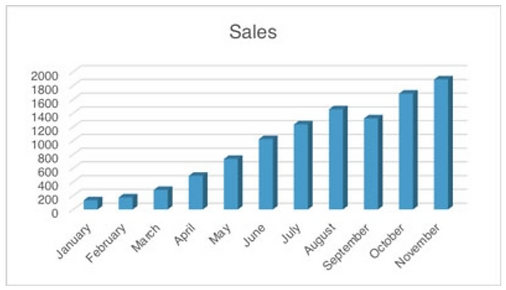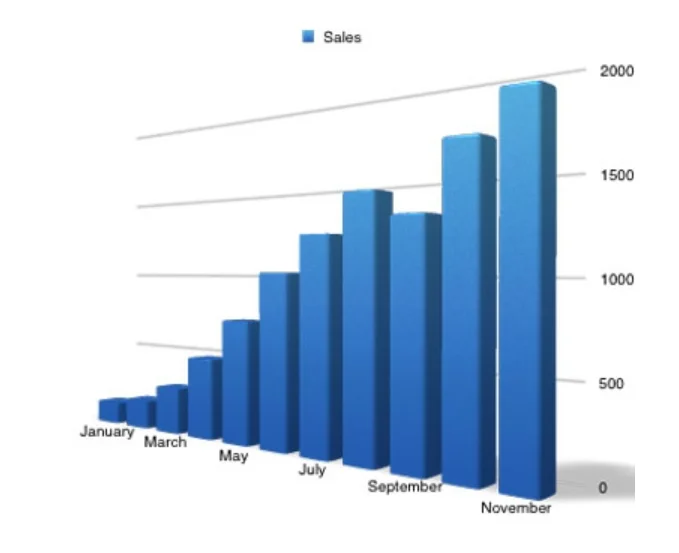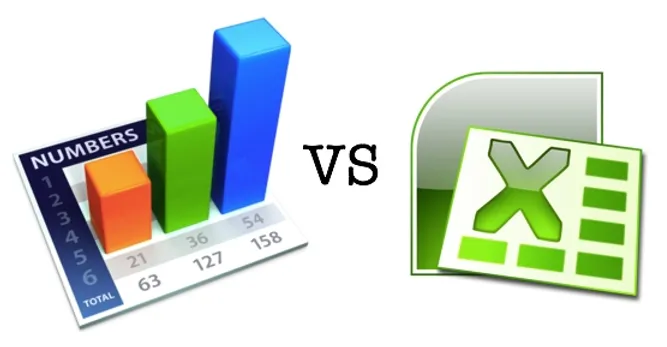Microsoft Excel was the first successful spreadsheet (an interactive computer application program for organization and analysis of data in tabular form) of its kind back in 1985, an improved version of Microsoft’s failed original spreadsheet Multiplan in 1982.
There are now a variety of spreadsheets available, with Microsoft’s Excel leading the market share with over 750 million users worldwide. In 2007 Apple released Numbers 1.0, adding to the growing rivalry between the two technology giants. Microsoft Excel has 400 functions in 11 categories compared to Apple’s Numbers possessing only 262 functions in 10 categories (categories for both spreadsheet programs include date/time, text, statistical, financial and engineering, etc). Before any comparison can be made between the two spreadsheet programs, it must be first considered which computer they are being accessed from. Apple Numbers was specifically made for Mac users whereas Microsoft Excel functions on both Mac and Windows computers.
Overall Excel provides an overwhelming amount of functions in comparison to Apple’s Numbers, but it can be argued that they both appeal to different spreadsheet users. Excel supports advanced charting and plotting features not available in Apple Numbers, however, Apple’s charts are more visually stimulating (as seen below).
3D Chart in Microsoft Excel:

3D Chart in Numbers:

Numbers makes it much easier to create spreadsheets with visual impact compared to Excel, with also the option of a wider variety of templates available when the program is first opened – a feature that lacks in Excel.
For overall functionality, Microsoft Excel has a multitude of pre-loaded formulas and functions. Numbers consequently lacks some of the more advanced formulas and functions of Excel, such as pivot tables. While Excel has more built-in functions, on the whole, only users who employ very advanced analytical techniques would miss these missing functions in Numbers. Numbers has always been second to Microsoft Excel, with Microsoft appealing to a wide range of users through their Microsoft Office package, which has more programs with more features for business and home users compared to Apple’s iWork alternative. However, Apple’s Numbers saw larger growth with the introduction of their mobile app on their popular iPhone and iPad range in 2013, allowing users to collaborate on their spreadsheet documents across a variety of their Apple platforms.
The lack of mobile presence was Microsoft Excel’s only downfall. New Microsoft CEO Satya Nadella, announced shortly after his appointment earlier this year that Microsoft were in plans to move popular Microsoft Office programs Excel, PowerPoint and Word to an app based format. All three Microsoft apps (Excel, PowerPoint and Word) shot to number one in the App Store, taking away Numbers’ competitive edge.
With Microsoft Excel now adapted specifically for smart phones and tablets, Excel will continue to dominate the spreadsheet market. It is fair to conclude that Numbers may be difficult for die-hard Excel enthusiasts to adapt to because of the difference in the Apple and Microsoft Excel user interfaces. However, it may be a better program for the casual or the home-based spreadsheet user, who requires a user-friendly program with a wider variety of templates to assist their basic spreadsheet requirements.
Accountants and other financial experts often choose Excel because of the versatility of the program and its speed in completing complex functions and calculations, matched with the extensive list of reliable features available to the sophisticated spreadsheet user.
Now, if you’re an accounting or finance expert and you can’t manage to let go of the habits you may have with Excel, you might want to consider a financial analytics platform to take care of your finances without having to leave Excel at all. Datarails is an FP&A solution made to consolidate data from any existing system into one unified database to give you real-time, accurate insights into your data sets as well as produces in-depth budgeting and professional reporting.





